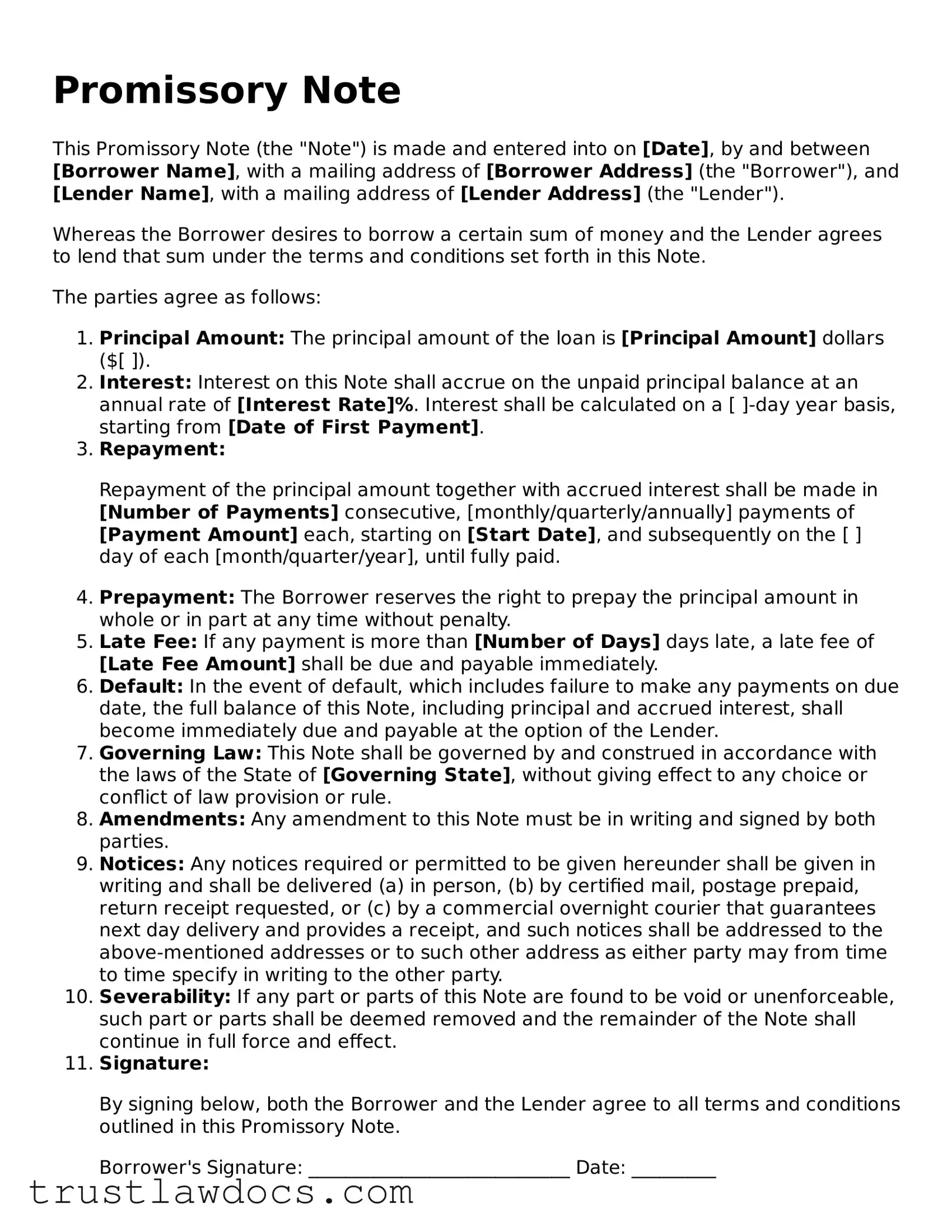What is a Promissory Note?
A Promissory Note is a legal document between two parties, where one party (the borrower) promises to repay a loan to the other party (the lender) under specified terms and conditions. It includes the amount of loan, interest rate, repayment schedule, and consequences of default.
Who should use a Promissory Note?
Anyone lending or borrowing money can use a Promissory Note. It is commonly used for personal loans between friends and family, loans to employees by businesses, or real estate transactions. It provides a clear and enforceable agreement for repayment.
Is a Promissory Note legally binding?
Yes, a Promissory Note is a legally binding document when it contains the signature of the borrower and adheres to the legal requirements of the jurisdiction in which it is used. It can be used in a court of law to enforce repayment if the borrower fails to meet the terms of the agreement.
What information is needed to create a Promissory Note?
To create a Promissory Note, the following information is necessary: the names and addresses of the borrower and lender, the loan amount, interest rate, repayment schedule, collateral (if any), and any other specific terms both parties agree upon.
Can the terms of a Promissory Note be changed?
Yes, the terms of a Promissory Note can be changed if both the borrower and the lender agree to the modifications. The changes should be documented in writing, and both parties should sign any amendment to the original agreement to ensure that it remains legally binding.
What happens if the borrower does not repay the loan as agreed?
If the borrower fails to repay the loan according to the terms of the Promissory Note, the lender may have legal recourse, which includes suing for the remaining balance, taking possession of any collateral specified in the note, or reporting the default to credit bureaus, depending on the agreed-upon terms.
Do I need a lawyer to create a Promissory Note?
While it is not mandatory to have a lawyer create a Promissory Note, it is advisable to consult with one to ensure that the document complies with local laws and adequately protects the interests of both parties. A lawyer can also advise on specific terms to include based on the circumstances of the loan.
